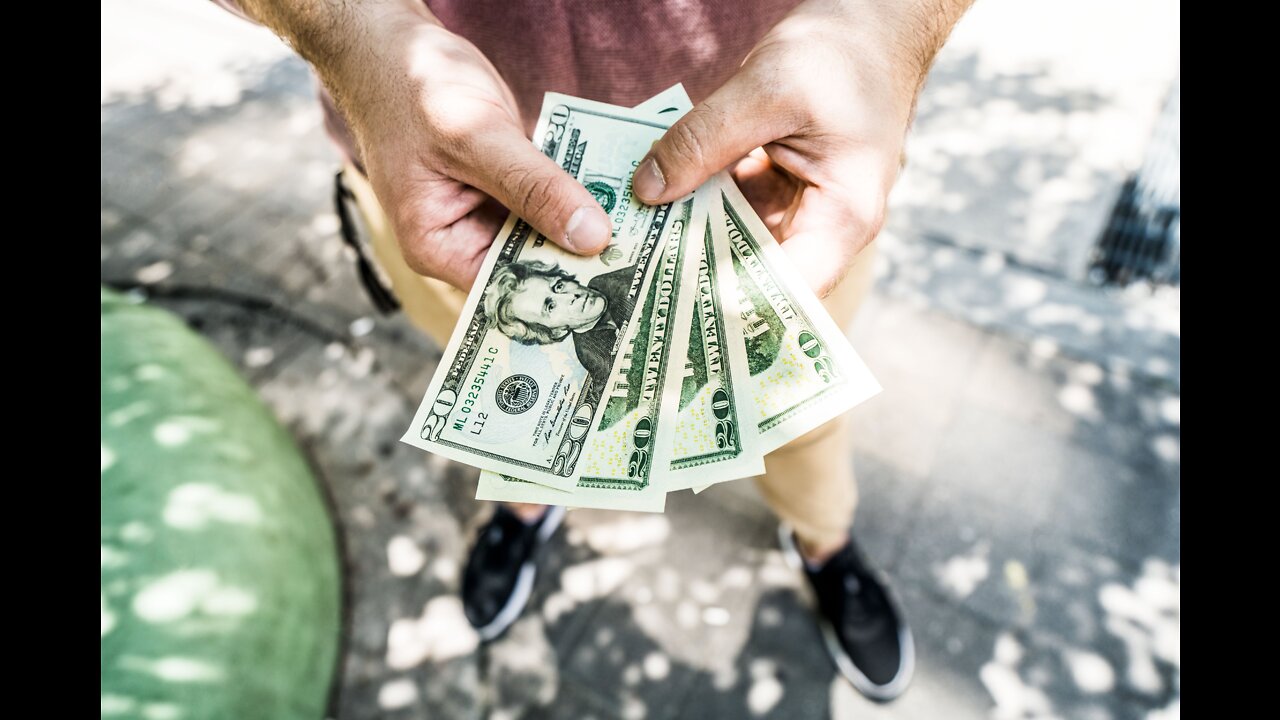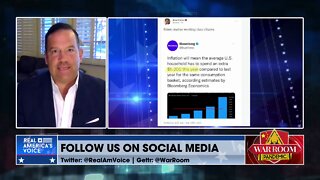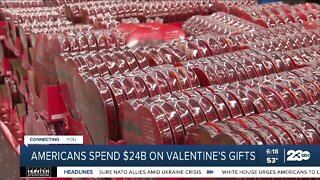Premium Only Content

Americans spend more than $300 a month on impulse purchases
Americans are spending more money on impulse purchases, but rising inflation might mean they’re getting less bang for their buck.
An annual poll of 2,000 U.S. adults compared current impulse spending trends over the last two years and found that 64% have increased their impulse shopping habits in 2022.
Currently, the average person spends $314 per month on impulse purchases, up from $276 in 2021 and $183 in 2020. Furthermore, the most the average person is willing to spend on a single item is $310, also up from $277 in 2021 and $157 in 2020.
Three in four (73%) respondents said most of their purchases tend to be spontaneous — a large jump from 59% who held the same sentiment last year.
But these spur-of-the-moment shopping sprees are not always fun and games: 68% said inflation had had a “huge impact” on what they spend their money on.
Seven in 10 have been more aware of their budget this year as a result, suggesting shoppers are spending more but are getting less, thanks to inflation.
Forty-one percent of shoppers added they had to spend more on essentials because of inflation.
Commissioned by Slickdeals and conducted by OnePoll, the study revealed half (52%) are impulsively buying equally online and in-store, while 42% in 2021 and 53% in 2020 did most of their shopping online exclusively.
While shopping online, seven in 10 are more likely to spend impulsively on their phones while lying in bed — up from 68% in 2021 and 66% in 2020. Shopping in bed was found to make up 37% of overall impromptu shopping.
The research found the most common unplanned buys in 2022 include clothing (35%), food and groceries (30%), household items (29%), shoes (28%) and consumer technology (27%), taking the top spots for what people will spend on.
Fifty-one percent tend to shop just for themselves, and over half (58%) said they’ve even saved money with their impulse shopping.
“This year’s survey indicates Americans are spending more on impulse purchases than in the past two years,” said Louie Patterson, personal finance content manager at Slickdeals. “While inflation is certainly impacting budgets across many essential shopping categories, interestingly, we’re also seeing consumers reporting an increase in the frequency of their impulse spending.”
Factors like shipping rates and emotions were also found to play a role in people’s shopping habits.
Two-thirds (65%) said they’re more likely to buy something if there’s free shipping and 69% are less likely to go through with their purchases if a shipping fee comes up.
Meanwhile, 61% said they feel a sense of happiness after they randomly buy something, and just as many believe that form of shopping can instantly turn around a bad day.
Sixty-seven percent said spontaneous shopping sprees positively affect their mood — a 2% increase from last year.
The emotions shoppers feel after making a purchase include happiness (41%) and excitement (40%) — but a third (34%) admit they simply shop out of boredom.
Two in three (67%) have even made an impulse purchase just to escape the fear of missing out.
“Fear of missing out is a powerful motivator for impulse purchasing, but as indicated in the survey, 58% of Americans report that unplanned purchases have actually saved them money,” Patterson added. “We regularly witness the positive effects of impulse purchasing through our community of shoppers helping one another find the best prices at any given time. Tapping into a great deal on household items, coffee or technology products can ultimately help you save on your budget.”
WHAT DO AMERICANS BUY ON IMPULSE?
2022
Clothing - 35%
Food/groceries - 30%
Household items - 29%
Shoes - 28%
Technology - 27%
Books - 27%
Takeout - 26%
Toys - 25%
Coffee - 25%
Spa services - 24%
2021
Food/groceries - 48%
Household items - 42%
Clothing - 40%
Coffee - 33%
Toys - 29%
Takeout - 28%
Books - 26%
Vehicles - 25%
Technology - 22%
Spa services - 20%
2020
Food/groceries - 47%
Clothing - 38%
Household items - 38%
Technology - 27%
Coffee - 27%
Vehicles - 25%
Takeout - 23%
Shoes - 23%
Books - 22%
Video games - 20%
-
 0:59
0:59
SWNS
9 days agoWomen get serious about their health at this age
171 -
 4:04
4:04
Bannons War Room
2 years agoSteve Cortes: Americans to Spend More in the Wake of Inflation
2.64K -
 1:45
1:45
WFTS
2 years agoMore Americans than ever support LGBTQ civil rights
464 -
 0:35
0:35
Mr Producer Media
3 years agoCNN: Americans Are Spending $150 MILLION More A Day For Gas Than They Did 1 Month Ago
986 -
 1:32
1:32
WGBA
2 years agoPride is more than just one month
314 -
 9:24
9:24
The Jimmy Dore Show
2 years agoSanction Hurt U.S. More Than Russia Say Americans
2.72K40 -
 0:29
0:29
KERO
3 years agoAmericans spend $24B on Valentine's Day gifts
4 -
 1:41
1:41
NTD News
3 years ago $0.01 earnedAmericans Spending $175 More per Month: Report on Inflation
28313 -
 2:52:01
2:52:01
Jewels Jones Live ®
2 days agoTRUMP SECURES BORDER | A Political Rendezvous - Ep. 113
98.4K37 -
 25:02
25:02
marcushouse
1 day ago $46.87 earnedStarship Just Exploded 💥 What Went Wrong This Time?!
192K131